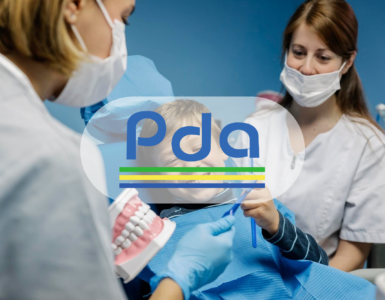For many parents, ensuring their children develop healthy habits early on is a top priority—especially when it comes to oral health. The truth is, building strong teeth and gums doesn’t start at the dentist’s office. It begins in the kitchen. From the foods children eat to the way they snack throughout the day, dietary habits play a major role in their long-term dental health.
As any pediatric dental specialist will tell you, good nutrition and oral health go hand-in-hand. The right eating habits can strengthen tooth enamel, reduce cavities, and even make dental visits less stressful. For families looking for the best kids dentist Ridgewood, understanding how diet affects children’s oral health is a great first step toward long-term wellness.
The Link Between Diet and Dental Health
It’s often said that “you are what you eat,” but when it comes to children’s oral health, what they eat can shape their smile for life. Nutrition plays an essential role in the development and maintenance of strong, healthy teeth. While brushing, flossing, and routine dental visits are critical, parents should know that no oral hygiene routine can fully protect a child’s teeth without the support of good eating habits.
From the moment a baby’s first teeth start to erupt, their bodies are actively absorbing nutrients that affect the strength of enamel, the structure of the jaw, and the overall condition of the gums. These early years are a window of opportunity. During this stage, parents can instill habits that will protect their children from common dental issues like cavities, tooth decay, enamel erosion, and even gum disease.
Studies from the Centers for Disease Control and Prevention (CDC) show that nearly 1 in 5 children aged 5 to 11 has at least one untreated decayed tooth. Many of these cases are linked directly to poor dietary choices—excessive sugar intake, frequent snacking, and acidic beverages all contribute to the problem.
By educating families early, the best kids dentist Ridgewood emphasizes prevention as the best line of defense. Proper nutrition provides the minerals teeth need to stay strong and helps the mouth maintain a neutral pH environment, which naturally wards off decay. It’s not just about avoiding the bad stuff—it’s also about feeding the mouth what it needs to build resilience and repair itself daily.
Parents may not always connect the dots between what’s on the dinner table and what happens in the dental chair. But pediatric dental specialists see the connection every day. Children who consume a diet rich in vitamins, minerals, and whole foods tend to have fewer cavities, stronger enamel, and healthier gums—even if they’re a little lax on brushing now and then. That’s how powerful a good diet can be.

Building Blocks of a Tooth-Friendly Diet
So, what exactly should parents be feeding their kids to keep those little teeth strong and healthy? While a well-rounded diet benefits the entire body, there are specific nutrients and food groups that have an outsized impact on dental health.
Calcium: The Cornerstone of Strong Teeth
Calcium is one of the most critical minerals for dental health. It strengthens tooth enamel and supports jawbone density, helping children maintain healthy alignment and bite as their adult teeth come in. Dairy products like milk, cheese, and yogurt are among the most accessible sources of calcium. They’re also kid-friendly and versatile, making them an easy addition to meals and snacks.
For children who are lactose intolerant or follow plant-based diets, other excellent sources of calcium include fortified almond or soy milk, tofu, broccoli, bok choy, and even canned salmon (with bones). Pediatric nutritionists and specialists at the best kids dentist Ridgewood can guide parents in adapting these options based on dietary preferences and medical needs.
Phosphorus: Calcium’s Support System
Phosphorus works in tandem with calcium to rebuild and maintain tooth enamel. It’s found in high-protein foods like eggs, meat, poultry, fish, nuts, and legumes. Together, phosphorus and calcium form a powerful team that reinforces the protective structure of teeth and keeps them resistant to acid erosion.
This mineral is especially important for children with high cavity risk or enamel defects. For these cases, dental professionals may recommend increasing phosphorus intake through both diet and supplements, alongside fluoride treatments.
Vitamin D: The Key to Absorption
Vitamin D isn’t just good for bones—it plays a crucial role in helping the body absorb calcium effectively. Without adequate vitamin D, even a calcium-rich diet may fall short of protecting teeth. Natural sources include sunlight exposure, fatty fish (like salmon or mackerel), egg yolks, and fortified foods such as cereals and milk.
Because vitamin D deficiency is surprisingly common in children—especially during the winter months—parents are encouraged to work with their pediatrician and dentist to ensure proper intake. The best approach involves regular outdoor play, balanced meals, and occasionally supplementation if recommended by a health care provider.
Fruits and Vegetables: Nature’s Toothbrushes
Crunchy fruits and vegetables are more than just healthy snacks—they help clean the teeth as children eat them. Apples, carrots, celery, and cucumbers increase saliva production, which helps rinse away food particles and bacteria. Saliva is the mouth’s first line of defense against decay, and the act of chewing fibrous foods provides a gentle scrubbing action on the teeth.
These foods are also rich in water and fiber, which help neutralize acids in the mouth. Best of all, they’re naturally low in sugar, making them ideal for school lunches, after-school snacks, or bedtime bites.
Water and Fluoride
Water is one of the simplest yet most powerful tools for oral health. Not only does it help wash away food debris, but when fluoridated, it actively strengthens enamel. Fluoride remineralizes the surface of the teeth, helping to repair early signs of decay before they turn into cavities.
Children should drink water throughout the day, especially after meals and snacks. For families in Ridgewood, municipal water may already be fluoridated, offering an easy and consistent source of protection. For those unsure, the local water authority can provide a report, or a quick call to the best kids dentist Ridgewood can help clarify whether fluoride supplementation is needed.
Foods and Habits to Limit
Just as there are foods that boost dental health, there are also those that can wreak havoc—especially when consumed frequently or in large amounts. Parents may not realize how quickly certain foods and habits can compromise even the most diligent brushing routine.
Sugar: The Main Culprit Behind Cavities
Sugar feeds the harmful bacteria in the mouth that produce acid. This acid breaks down tooth enamel, creating weak spots that eventually turn into cavities. While candy and desserts are obvious sources, sugar hides in many processed foods, including granola bars, fruit-flavored yogurts, cereals, sauces, and even savory snacks like crackers and chips.
Limiting added sugars in a child’s diet is essential for long-term oral health. When sugary treats are given, it’s better to serve them with meals rather than as standalone snacks, as saliva flow is higher during meals and can help mitigate sugar’s effects.
Sticky and Chewy Foods
Certain foods cling to teeth, staying in the mouth long after the last bite. Gummy candies, dried fruits, caramels, and chewy granola bars are some of the worst offenders. These foods are not only high in sugar but also hard to remove with brushing, making them a prime cause of plaque buildup and tooth decay.
Children wearing braces are especially vulnerable to damage from sticky foods. The best kids dentist Ridgewood recommends avoiding these altogether during orthodontic treatment.
Frequent Snacking
Snacking too often—especially on sugary or starchy foods—keeps the mouth in a constantly acidic state. This prevents enamel from recovering and increases the likelihood of decay. Instead, it’s healthier to establish regular meal and snack times and encourage water as the primary beverage between meals.
Acidic Foods and Drinks
Citrus fruits, pickles, tomatoes, and vinegar-based dressings can erode tooth enamel over time. Sports drinks, energy drinks, and soda (even diet soda) are highly acidic and should be consumed sparingly, if at all. If a child enjoys these foods, serving them with a meal and following up with water can help reduce their impact.
Establishing Healthy Eating Routines
Consistency is key when building long-term habits for kids—and that includes eating routines that support dental health. While it’s normal for children to be drawn to sweet treats or prefer familiar comfort foods, setting up a structure around mealtime and snack choices can help reduce the risk of cavities and make oral care easier to maintain.
One of the simplest habits to introduce is serving balanced meals at regular intervals. Children thrive on routine, and when meals include a combination of lean proteins, fruits, vegetables, and whole grains, their bodies and teeth get the nutrients they need. Including dairy or fortified plant-based alternatives ensures adequate calcium and vitamin D intake, which are critical for enamel development.
Beyond what’s served, how and when children eat also matters. Grazing all day or snacking too frequently—especially on carbohydrate-heavy or sugary items—prevents the mouth from returning to a neutral pH, leaving teeth constantly exposed to acid. Pediatric dentists often recommend limiting snacks to two per day and encouraging water instead of juice or milk between meals. When treats are given, pairing them with meals helps lessen their impact.
Hydration also plays an important role. Encouraging children to drink fluoridated water throughout the day not only supports total health but acts as a natural mouth rinse, washing away food particles and aiding remineralization. This becomes even more valuable if brushing can’t happen right after eating, such as at school or during activities.
For families just beginning to explore dental care for their children, establishing strong eating routines at home can make that first visit easier. The best kids dentist Ridgewood provides supportive guidance to parents at every step, from how to pack a tooth-friendly lunchbox to understanding which snacks help reduce plaque.
Another tip: get children involved in food choices. Having kids help pick out healthy groceries, prepare their own meals, or build colorful snack plates increases buy-in. When they feel ownership over their choices, they’re more likely to adopt these habits willingly. And just like learning to brush and floss properly, it’s all part of building independence with personal care.

Special Considerations for Children with Braces
Children undergoing orthodontic treatment face additional challenges when it comes to maintaining a tooth-friendly diet. Braces, expanders, and other appliances create more surface area where food particles can stick, and certain foods pose a risk of damaging brackets or wires.
The best kids dentist Ridgewood often works closely with orthodontic patients and their families to provide clear guidelines on what to eat and what to avoid during treatment. Adhering to these recommendations can protect the investment families make in their child’s smile and reduce the risk of setbacks.
Foods to avoid include:
- Hard items such as popcorn, nuts, hard pretzels, and ice.
- Sticky or chewy snacks, including caramel, taffy, fruit snacks, and gum.
- Biting into whole foods like apples or corn on the cob—these can be sliced or cooked to soften texture.
Instead, pediatric dentists suggest:
- Soft fruits and steamed vegetables that are easier to chew.
- Smoothies and yogurt bowls that provide calcium and probiotics.
- Dairy snacks like cheese sticks, which are convenient and safe for braces.
- Whole grain pasta, rice, or soft breads that don’t cling to brackets.
Hygiene also becomes more complex during orthodontic treatment. Brushing after meals is ideal, but when that’s not possible, rinsing with water and using an orthodontic brush or water flosser in the evening can help dislodge trapped food.
It’s not just about protecting appliances—it’s about protecting teeth. Orthodontic appliances can trap plaque around brackets, making enamel demineralization (those white spots) more likely. Pediatric specialists routinely monitor children during orthodontic care to ensure teeth stay clean and healthy throughout the treatment process.
If parents are considering orthodontic care but unsure when to begin, a consultation with the best kids dentist Ridgewood can help identify early issues with spacing, bite, or jaw development and make recommendations tailored to each child’s growth stage.
Behavioral Tips for Picky Eaters
One of the biggest hurdles to a tooth-healthy diet is picky eating. It’s a common challenge, especially in younger children, and it can become even more complicated when trying to encourage nutrient-rich foods like leafy greens or dairy products.
Rather than resorting to battles at the dinner table, pediatric dental specialists recommend behavioral strategies rooted in patience, exposure, and positive reinforcement. These approaches are similar to those used in pediatric dental care, particularly when working with children who are anxious or have special health care needs.
Here are several practical ways parents can support healthy eating, even with selective eaters:
- Introduce new foods gradually. Children may need 10–15 exposures to a new food before they accept it. Start with small tastes alongside familiar favorites.
- Avoid pressure or bribes. This often backfires and can create negative associations with food. Instead, offer praise for trying new things, even if it’s just one bite.
- Make meals fun. Create themed snack plates with cut-out fruits and colorful veggies. Use toothpick skewers or muffin tin trays to present variety in small portions.
- Model healthy eating. When children see adults enjoying nutritious foods, they’re more likely to give them a try.
- Let them help. Kids who help shop, prep, and serve meals are more invested in the process and open to trying what they helped create.
It’s also important to recognize sensory sensitivities, which can affect a child’s comfort with certain textures, smells, or flavors. The best kids dentist Ridgewood often works with families facing these challenges and can coordinate with pediatricians, feeding specialists, or occupational therapists when needed.
Every child is different, and their relationship with food evolves over time. With gentle guidance and consistent exposure, even picky eaters can develop preferences that support strong teeth and lifelong wellness.
When to Seek Professional Guidance
Even with the best home routines, professional dental care is essential for ensuring children’s teeth stay strong and healthy as they grow. Regular visits to a pediatric dental specialist help catch issues early, provide preventive care like fluoride and sealants, and offer customized guidance based on a child’s age, health status, and dental development.
Parents often wonder: when should that first visit happen? The American Academy of Pediatric Dentistry (AAPD) recommends that children see a dentist by their first birthday or within six months of their first tooth erupting. Early visits help build comfort with the dental environment and allow the dentist to assess alignment, hygiene habits, and dietary patterns.
For families with children who have special health care needs, professional guidance becomes even more vital. The best kids dentist Ridgewood provides compassionate, individualized care that takes into account sensory sensitivities, medical conditions, and behavioral challenges. Services are tailored to ensure that every child—regardless of their unique needs—receives the best possible care.
Preventive care may include:
- Fluoride treatments to strengthen enamel.
- Dental sealants on molars to protect against decay.
- Professional cleanings to remove plaque that brushing misses.
- Nutritional counseling based on developmental needs.
Parents are encouraged to ask questions during visits, share concerns about eating or brushing habits, and involve children in the process. The more comfortable and informed families are, the more likely they are to maintain consistent dental routines at home.
Pediatric dentists are more than just “tooth doctors”—they’re partners in a child’s overall wellness journey. And when families work together with trusted providers, like PDA Ridgewood, they lay the foundation for healthy smiles that last a lifetime.





